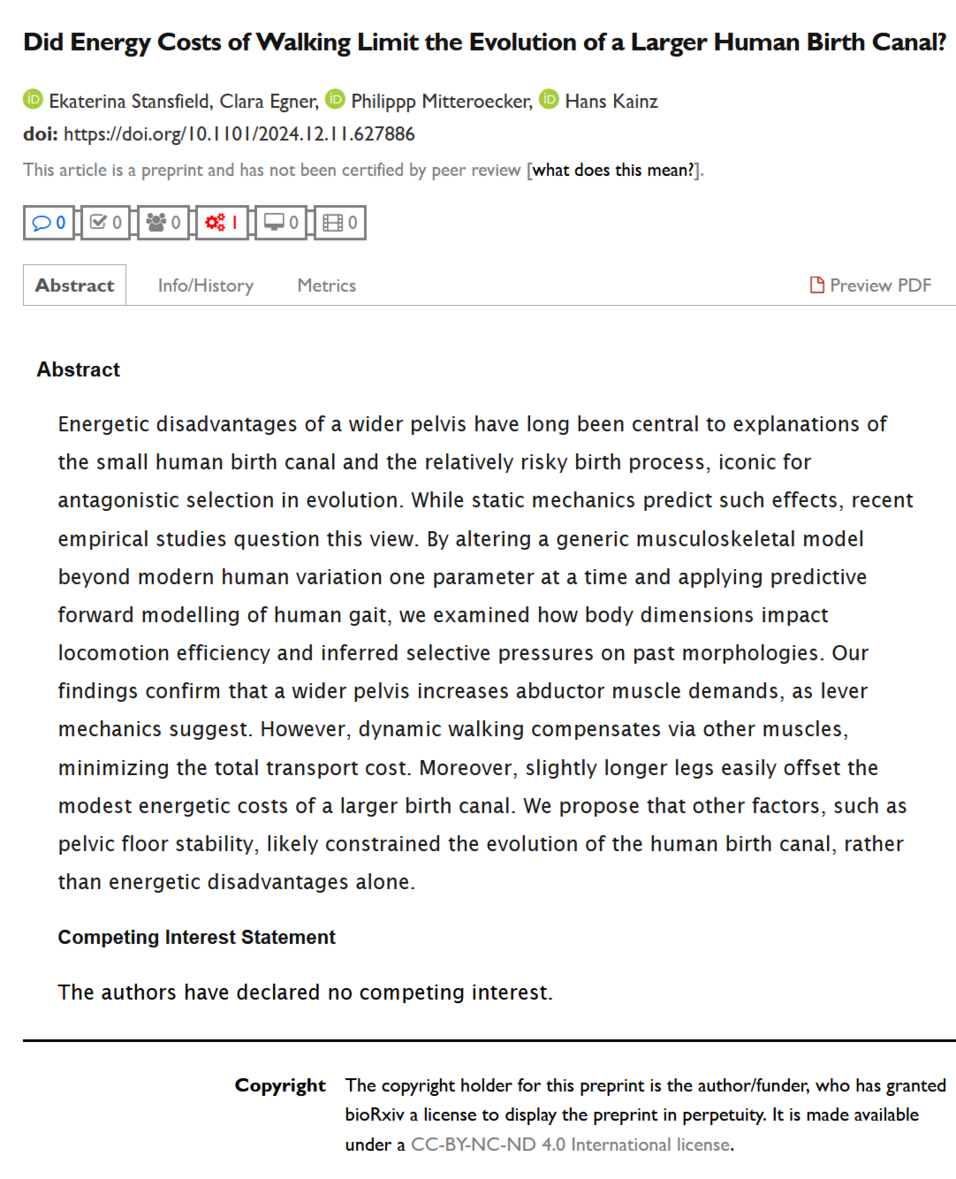Abstract
Energetic disadvantages of a wider pelvis have long been central to explanations of the small human birth canal and the relatively risky birth process, iconic for antagonistic selection in evolution. While static mechanics predict such effects, recent empirical studies question this view. By altering a generic musculoskeletal model beyond modern human variation one parameter at a time and applying predictive forward modelling of human gait, we examined how body dimensions impact locomotion efficiency and inferred selective pressures on past morphologies. Our findings confirm that a wider pelvis increases abductor muscle demands, as lever mechanics suggest. However, dynamic walking compensates via other muscles, minimizing the total transport cost. Moreover, slightly longer legs easily offset the modest energetic costs of a larger birth canal. We propose that other factors, such as pelvic floor stability, likely constrained the evolution of the human birth canal, rather than energetic disadvantages alone.

